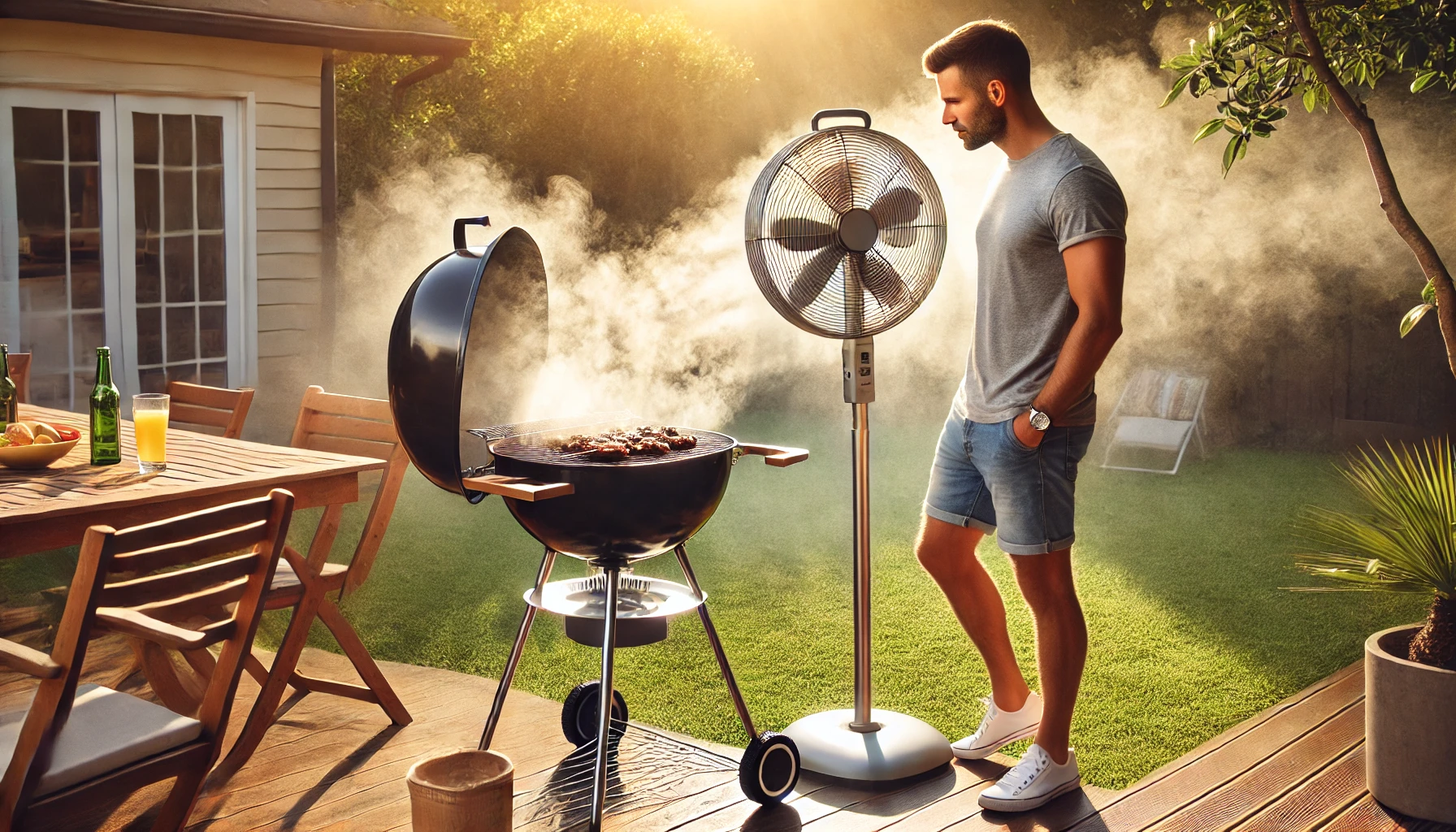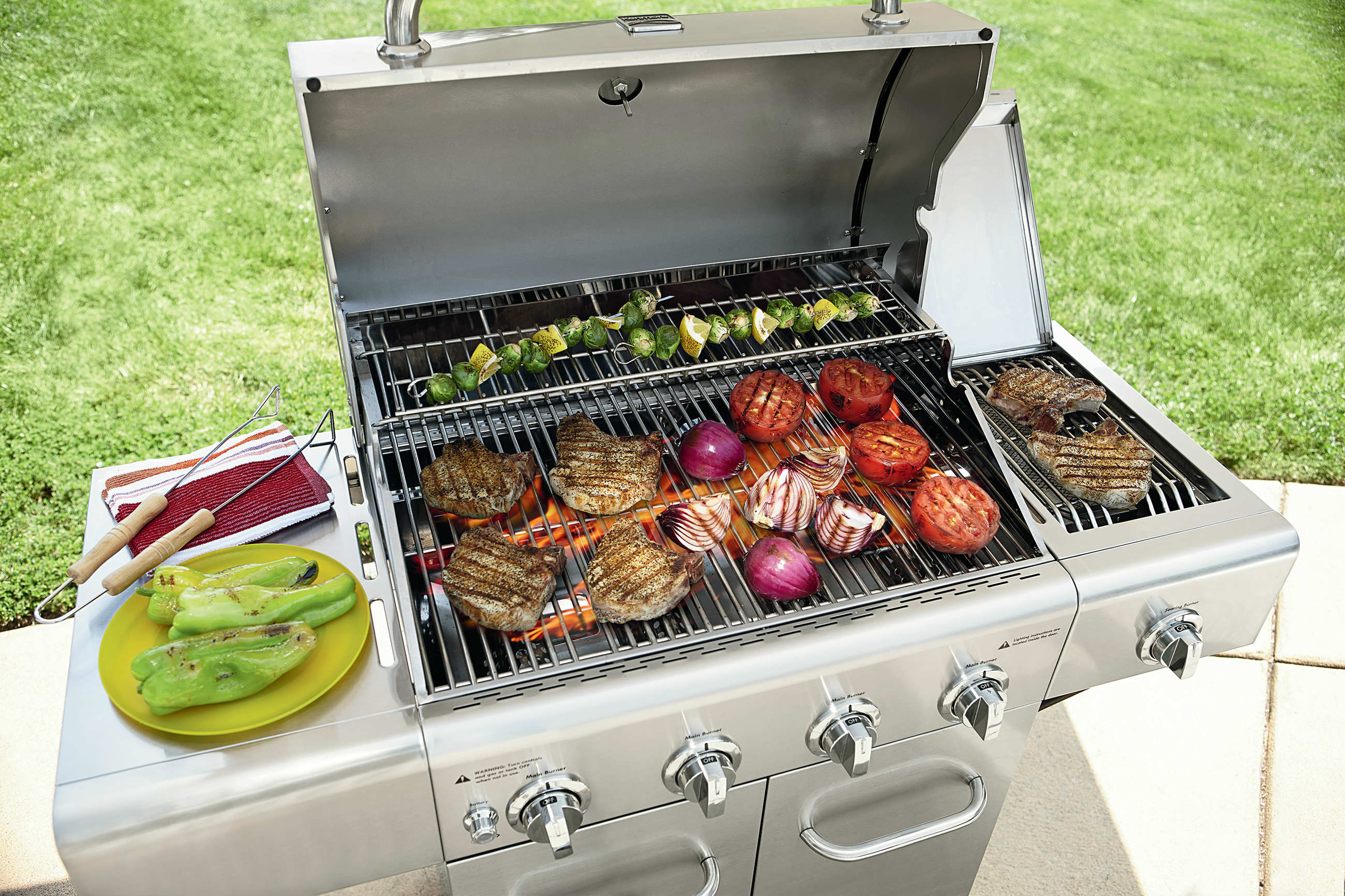Table of Contents
1. Stay Cool
2. Clean Grill Grates with Lemon or Onion
3. Burn off Excess Food Deposits after Every Grilling Session
4. Clean Your Grill with Vinegar and Water
5. Soak Your Grill Grates
6. Use a Pellet Grill to Perfectly Control Grill Temperature while Adding Smokey Flavor to Foods
Professional Cleaning and Maintenance Will Help Keep Your Grill in Top Shape and Lasting Longer
Discover 6 New Barbecue Hacks for 2024

As backyard grilling ramps up in 2024, mastering the perfect barbeque can be a challenge—especially when you're trying to stay cool and control grill heat to cook everything perfectly. Keeping your grill in top shape is also a priority so family and guests will trust your cooking to be safe.
This year, we've got six fresh barbecue hacks that will transform your grilling experience. We start by recommending innovative ideas to keep you cool while you cook. Next, we discuss easy grill cleaning techniques to get and keep your grill in top shape. You’ll also find a barbecue hack to up your cooking game and delight your family and guests.
These tips will help you enjoy your time at the grill like never before. Let's dive into these game-changing hacks for the ultimate 2024 BBQ season!
KEY TAKEAWAYS
- Staying cool while grilling during hot summer months is a must – use a misting fan to cool down the area around your grill.
- Find barbecue grill cleaning hacks to keep your food sanitary and tasting great.
- Learn about how a new pellet grill can help you up your barbecue game by precisely controlling temperature while adding awesome flavor to meats and veggies.

1. Stay Cool
Grilling in hot weather can be challenging, but staying cool is essential for an enjoyable barbecue. Here is the first hack for staying cool in hot summer weather. You’ll also find some additional expert tips to help you beat the heat when grilling in summer and early fall.
Hack – Use a Misting Fan to Stay Cool while Grilling
More misting fans are emerging in markets across the country in 2024. A misting fan connects to a standard garden hose or faucet. Nozzles in front of the spinning fan blade provide an atomized mist of water to cool down the area in front of the fan. As the tiny water droplets of the mist evaporate, their latent heat of vaporization removes heat from the surrounding air to lower temperature significantly. Unevaporated mist that coats your skin evaporates to cool your body in the same way.
Use this barbecue hack to stay reasonably cool and comfortable while grilling in hot weather.
Additional Tips for Staying Cool While Grilling
- Position your grill in a shaded area under trees or use a patio umbrella, canopy, or pergola to shade the area in front of your grill. You can’t park the barbecue grill directly under low tree limbs or other items, but you can smartly and safely position the grill to shad yourself as you grill. Shade can make a significant difference in keeping you cool.
- Wear light-colored, loose-fitting clothing made of breathable fabrics like cotton or linen to stay cool. Avoid synthetic materials that trap heat and moisture.
- Keep a cooler filled with ice-cold water, refreshing beverages, or electrolyte drinks nearby to stay hydrated while grilling.
2. Clean Grill Grates with Lemon or Onion
Cleaning your grill grates with lemon or onion can be a game-changer. These natural ingredients are not only easily accessible but also highly effective.
The natural acidity of lemon and onion helps break down grease and grime, making it easier to remove stubborn residue. Additionally, their antimicrobial properties help kill bacteria and other harmful pathogens on your grill.
Step-by-Step Guide
- Heat up your grill to a high temperature to loosen any stuck-on food particles.
- Cut a lemon or onion in half.
- Using tongs or a long-handled fork, rub the lemon or onion halves across the grill grates. The natural juices will help loosen and dissolve residue.
- Once cleaned, use a grill brush to remove any remaining debris.

3. Burn off Excess Food Deposits after Every Grilling Session
To make the lemon or onion cleaning hack more successful, don’t shut down your gas grill immediately after the last burger’s been flame-grilled to perfection. Instead, turn the grill up for a few minutes to burn off any excess food. For a charcoal grill, open the lid and vents to provide air to the charcoal and heat the grates for cleaning. If you have a pellet grill, increase the temperature setting briefly to help clean the grates after cooking.
Reuse the lemon or onion that you used before grilling to help remove residue. You can also use a long handled grill brush to help remove stubborn food deposits from the grill grates.
4. Clean Your Grill with Vinegar and Water
You may already be using vinegar and water as an indoor cleaning solution, but don’t stop there — it’s equally effective on stubborn grill grates. The secret behind how to clean grill grates with vinegar couldn’t be easier. Simply combine equal parts vinegar and water in a spray bottle and spray on every part of a cool grill.
Be sure to blast the inside and outside of the hood, the grates, beneath the grates, etc. Briefly let the vinegar solution sit, then wipe the outside with a heavy-duty sponge or towel and the grates with a grill brush.
To thoroughly clean your grill inside and out, follow the tips in this helpful video:
5. Soak Your Grill Grates
While it’s best to give your grill a light cleaning after every use, it’s also important to do a seasonal deep cleaning at least twice a year. If you’re in a climate where year-round outdoor cooking is a pipe dream (or requires multiple layers of clothing), plan to give your grill a deep-cleaning at the end of the fall grilling season and then again when it’s time to fire things up in spring.
Soaking the grates allows time to do the scrubbing work for you. Options for soaking include: vinegar and water, or baking soda and water. Tall construction buckets work well for this task, and the dirtier the grill, the longer the soak.
6. Use a Pellet Grill to Perfectly Control Grill Temperature while Adding Smokey Flavor to Foods
If you haven’t yet tried cooking on a pellet grill, 2024 is the year to begin.
How a Pellet Grill Works
A pellet grill operates by using compressed wood pellets as both fuel and flavor. These pellets are loaded into a hopper on the side of the grill, and an auger system feeds them into a firebox where they are ignited by an electric hot rod. A fan circulates air within the grill, ensuring that the pellets burn evenly and maintaining consistent heat. The grill's internal temperature is controlled by a digital thermostat, which adjusts the pellet feed rate to maintain the desired heat level. This setup allows for precise temperature control, making it ideal for slow-smoking meats, roasting, and even grilling. The wood pellets impart a smoky flavor to the food, enhancing the cooking process with an authentic, wood-fired taste.
Advantages of Using a Pellet Grill
A pellet grill offers several advantages over both gas and charcoal grills, making it a versatile and user-friendly option for outdoor cooking. One of the main benefits is its precise temperature control, which allows for consistent cooking results. Unlike charcoal grills, which can be difficult to regulate, or gas grills that often have temperature fluctuations, a pellet grill's digital thermostat maintains even heat by adjusting the pellet feed rate automatically. This makes it ideal for low-and-slow cooking, such as smoking meats or roasting, while still being capable of grilling at higher temperatures.
Another advantage is the rich, smoky flavor that pellet grills provide, thanks to the use of wood pellets as fuel. Charcoal grills also produce smoky flavor, but pellet grills offer a broader range of wood flavors, like hickory, mesquite, or applewood, that you can easily swap to suit different recipes. Gas grills, on the other hand, lack this natural smoky essence.
Pellet grills are also convenient, offering the ease of use of a gas grill with the flavor benefits of wood or charcoal. They typically feature automatic ignition and consistent heat with minimal effort, making them perfect for both beginners and seasoned grillers who want a more hands-off experience. Additionally, they are cleaner than charcoal grills, producing less ash and mess while offering a more environmentally friendly alternative to propane or charcoal.
Professional Cleaning and Maintenance Will Help Keep Your Grill in Top Shape and Lasting Longer
Sears Home Services offers professional grill maintenance and cleaning to help you keep your barbecue grill in top shape and lasting longer. We also provide expert grill repair services to fix anything that goes wrong. Our technicians know how to maintain and repair all of the top brands including KitchenAid, Frigidaire, Kenmore, Nexgrill, Weber, Char-Broil, Coleman and more. Schedule maintenance or repair as needed to help keep your barbecue grill working smoothly.
Schedule your gas grill maintenance now!
Keep your gas grill in top shape and operating safely with regular professional maintenance.
Was this information helpful?
Schedule your gas grill maintenance now!
Maintain Gas Grill Resources
Discover top gas grill safety tips to protect your family and home during every BBQ. Learn how to grill safely with these expert guidelines.
Explore top gas grill recipes, unique grilling techniques, and must-have accessories to make your July 4th BBQ a hit. Boost your grilling skills and prepare for a celebration to remember!
Learn how to keep your outdoor kitchen appliances in top condition with our comprehensive guide.
If you want the thrill of the grill to last a good long time, follow these maintenance tips from Ed Rzasa, outdoor grill expert at Sears.
Glossary Terms
Natural gas is a fossil fuel used primarily for heating, cooking, and electricity generation. It's a hydrocarbon gas mixture consisting mainly of methane, but it also contains smaller amounts of other hydrocarbons and sometimes sulfur compounds.
A freezer bag is a specially designed plastic bag used for the cold storage of food in the freezer, offering protection against freezer burn and preserving the food's freshness and flavor over extended periods.
A furnace filter is a component installed in HVAC systems to trap and remove dust, pollen, and other airborne particles from the air, enhancing indoor air quality and protecting the furnace's inner workings.
Hard water is water that contains high levels of dissolved minerals, particularly calcium and magnesium. It contrasts with soft water, which has lower concentrations of these minerals.
Common Appliance Symptoms
The most common reasons your Whirlpool washer won't stop filling are a clogged water valve, a bad water-level pressure switch, or a malfunctioning electronic control board.
The most common reasons your Whirlpool washer won't spin or drain are a seized gearcase, a broken motor, or a failed door switch.
The most common reasons your Whirlpool washer won't turn off are a malfunctioning electronic control board, broken motor or a jammed door lock assembly.
The most common reasons your Whirlpool washer won't start cycle are a malfunctioning electronic control board, jammed door lock assembly or a faulty user interface.
The most common reasons your Whirlpool washer vibrates are a damaged suspension rod, malfunctioning electronic control board or a dead fan.
The most common reasons your Whirlpool washer is experiencing the rinse cycle not working are a broken lid switch, a bad water-level pressure switch, or a malfunctioning electronic control board.



